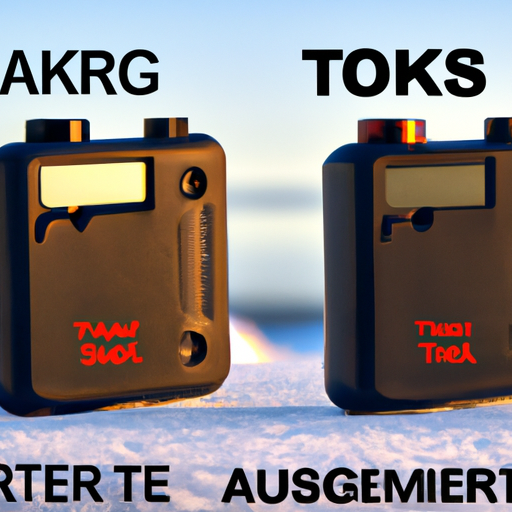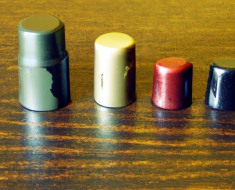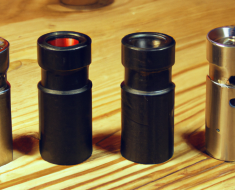“Unlock your full potential with the perfect trigger upgrade.”
Performance Differences Between Drop-in and Custom Aftermarket Triggers
When it comes to upgrading your firearm, one of the most popular modifications is installing an aftermarket trigger. A high-quality trigger can improve your shooting accuracy, speed, and overall performance. There are two main types of aftermarket triggers: drop-in triggers and custom triggers. Both have their own unique advantages and disadvantages, so it’s important to understand the differences between them before making a decision.
Drop-in triggers are pre-assembled units that can be easily installed into your firearm without any gunsmithing required. These triggers are designed to fit into the existing trigger housing of your firearm, making them a convenient option for those who want to upgrade their trigger without having to make any permanent modifications to their gun. Drop-in triggers are available in a wide range of prices, from budget-friendly options to high-end models with advanced features.
One of the biggest advantages of drop-in triggers is their ease of installation. Most drop-in triggers can be installed in a matter of minutes with just a few basic tools. This makes them a popular choice for those who want to upgrade their trigger without having to pay for professional installation. Additionally, drop-in triggers are typically more affordable than custom triggers, making them a great option for shooters on a budget.
However, drop-in triggers do have some limitations when it comes to customization. Since they are pre-assembled units, you may not be able to customize certain aspects of the trigger, such as pull weight or reset distance. This can be a drawback for shooters who have specific preferences when it comes to trigger feel and performance.
On the other hand, custom triggers are fully customizable units that are built to your exact specifications. These triggers are typically handcrafted by skilled gunsmiths and can be tailored to meet your specific shooting needs. Custom triggers offer a level of precision and craftsmanship that is unmatched by drop-in triggers, making them a popular choice for competitive shooters and firearms enthusiasts who demand the highest level of performance from their firearms.
One of the biggest advantages of custom triggers is their ability to be fully customized to your liking. From pull weight and reset distance to trigger shoe design and material, custom triggers allow you to fine-tune every aspect of your trigger to suit your shooting style. This level of customization can result in a trigger that feels like an extension of your hand, improving your shooting accuracy and control.
However, custom triggers do come with a higher price tag compared to drop-in triggers. The precision craftsmanship and customization options that come with custom triggers often result in a higher cost, making them a less budget-friendly option for some shooters. Additionally, custom triggers may require professional installation by a skilled gunsmith, adding an extra cost to the overall upgrade.
In conclusion, both drop-in triggers and custom triggers have their own unique advantages and disadvantages when it comes to upgrading your firearm’s performance. Drop-in triggers offer convenience and affordability, while custom triggers provide unmatched precision and customization options. Ultimately, the best choice for you will depend on your shooting needs, budget, and personal preferences. Whether you opt for a drop-in trigger or invest in a custom trigger, upgrading your firearm’s trigger can greatly enhance your shooting experience and performance on the range or in competition.
Cost Comparison of Popular Aftermarket Trigger Brands
When it comes to upgrading your firearm, one of the most popular modifications is installing an aftermarket trigger. A high-quality trigger can improve accuracy, reduce trigger pull weight, and enhance overall shooting performance. With so many options on the market, it can be overwhelming to choose the right one for your needs. In this article, we will compare the cost of popular aftermarket trigger brands to help you make an informed decision.
One of the most well-known aftermarket trigger brands is Timney Triggers. Timney offers a wide range of triggers for various firearms, including rifles, shotguns, and handguns. Their triggers are known for their crisp break and smooth pull, making them a favorite among shooters. However, quality comes at a price, and Timney triggers are typically on the higher end of the cost spectrum.
Another popular brand in the aftermarket trigger market is Geissele Automatics. Geissele triggers are highly regarded for their precision engineering and exceptional performance. They offer a variety of triggers tailored to different shooting styles and preferences. While Geissele triggers are more expensive than some other brands, many shooters believe that the price is justified by the superior quality and reliability of their products.
For those on a budget, Velocity Triggers offers a more affordable option without sacrificing quality. Velocity triggers are known for their reliability and consistency, making them a popular choice among budget-conscious shooters. While they may not have all the bells and whistles of higher-end brands, Velocity triggers still provide a significant improvement over stock triggers at a fraction of the cost.
CMMG is another brand that offers affordable aftermarket triggers without compromising on performance. CMMG triggers are known for their smooth pull and minimal creep, making them a popular choice for both casual shooters and competitive marksmen. While they may not have the same level of customization options as some other brands, CMMG triggers provide excellent value for the price.
In conclusion, choosing the right aftermarket trigger ultimately comes down to your budget and personal preferences. While high-end brands like Timney and Geissele offer top-of-the-line quality and performance, they also come with a higher price tag. On the other hand, budget-friendly options like Velocity Triggers and CMMG provide excellent value without breaking the bank.
Ultimately, it’s essential to do your research and consider factors such as trigger pull weight, break characteristics, and customization options before making a decision. Whether you’re looking to improve accuracy on the range or gain an edge in competition shooting, upgrading to an aftermarket trigger can make a significant difference in your shooting experience. So take your time exploring different brands and models to find the perfect trigger for your needs.
Installation Process: Drop-in vs. Custom Aftermarket Triggers

When it comes to upgrading your firearm, one of the most popular modifications is installing an aftermarket trigger. Aftermarket triggers can improve the feel, performance, and overall shooting experience of your firearm. There are two main types of aftermarket triggers: drop-in triggers and custom triggers. In this article, we will compare these two types of triggers and discuss the installation process for each.
Drop-in triggers are pre-assembled units that can be easily installed in place of the factory trigger without any gunsmithing required. These triggers are designed to fit specific models of firearms and typically come with all the necessary components for installation. Drop-in triggers are a popular choice for those who want to upgrade their trigger without having to make any permanent modifications to their firearm.
On the other hand, custom triggers are tailor-made to fit a specific firearm and are often handcrafted by skilled gunsmiths. Custom triggers are highly customizable and can be fine-tuned to suit the shooter’s preferences. While custom triggers offer a higher level of precision and customization, they usually require professional installation by a gunsmith.
The installation process for drop-in triggers is relatively straightforward and can be done at home with basic tools. To install a drop-in trigger, simply remove the pins holding the factory trigger in place, swap out the old trigger for the new one, and reassemble the firearm. Most drop-in triggers come with detailed instructions to guide you through the installation process.
Custom triggers, on the other hand, require more expertise and specialized tools to install. Since custom triggers are made to fit a specific firearm, precise fitting is crucial to ensure proper function and safety. Gunsmiths who specialize in custom trigger installations have the knowledge and experience to properly install and adjust the trigger for optimal performance.
When choosing between a drop-in trigger and a custom trigger, consider your level of expertise and comfort with firearms. If you are new to gun modifications or prefer a quick and easy upgrade, a drop-in trigger may be the best option for you. However, if you are looking for a highly customized trigger that is tailored to your shooting style, a custom trigger may be worth the investment.
In conclusion, both drop-in triggers and custom triggers offer unique benefits and advantages for upgrading your firearm’s trigger. Drop-in triggers are easy to install and require minimal effort, making them a popular choice for beginners or those looking for a quick upgrade. Custom triggers, on the other hand, offer superior customization and precision but require professional installation by a skilled gunsmith.
Whether you choose a drop-in trigger or a custom trigger, upgrading your firearm’s trigger can greatly enhance your shooting experience. Take the time to research different options and consider your needs and preferences before making a decision. With the right aftermarket trigger, you can improve accuracy, control, and overall performance when shooting your firearm.
Durability and Longevity of Various Aftermarket Trigger Materials
When it comes to upgrading your firearm with an aftermarket trigger, one of the key considerations is the durability and longevity of the trigger material. After all, you want a trigger that can withstand the rigors of regular use without wearing out or breaking down prematurely. In this article, we will compare different types of aftermarket trigger materials to help you make an informed decision.
One popular material used in aftermarket triggers is aluminum. Aluminum triggers are lightweight and offer a crisp, clean break. They are also resistant to corrosion, making them a durable option for your firearm. However, some shooters may find that aluminum triggers can feel cold to the touch in colder weather. Additionally, aluminum triggers may be more prone to wear over time compared to other materials.
Another common material used in aftermarket triggers is steel. Steel triggers are known for their strength and durability, making them a popular choice among shooters who prioritize longevity. Steel triggers also tend to have a smoother feel compared to aluminum triggers. However, steel triggers can be heavier than other materials, which may affect the overall balance of your firearm. Additionally, steel triggers may require more maintenance to prevent corrosion.
For those looking for a balance between durability and weight, titanium triggers are a great option. Titanium is known for its strength and lightness, making it an ideal material for aftermarket triggers. Titanium triggers are also resistant to corrosion, ensuring that they will last for years to come. However, titanium triggers can be more expensive than other materials, so they may not be the best choice for budget-conscious shooters.
Polymer triggers are another option worth considering for those looking for a lightweight and affordable aftermarket trigger. Polymer triggers are easy to install and offer a smooth pull with minimal creep. They are also resistant to corrosion and can withstand regular use without wearing out quickly. However, some shooters may find that polymer triggers lack the crispness of metal triggers.
In conclusion, when it comes to choosing an aftermarket trigger for your firearm, it is important to consider the durability and longevity of the trigger material. Aluminum triggers offer a lightweight option with good corrosion resistance but may wear out faster than other materials. Steel triggers provide excellent strength and durability but can be heavier and require more maintenance. Titanium triggers offer a balance between durability and weight but come at a higher price point. Polymer triggers are a lightweight and affordable option but may lack the crispness of metal triggers.
Ultimately, the best aftermarket trigger material for you will depend on your personal preferences and shooting needs. Whether you prioritize durability, weight, or affordability, there is a material out there that will suit your needs. By comparing the different types of aftermarket trigger materials, you can make an informed decision that will enhance your shooting experience for years to come.
User Reviews: Pros and Cons of Different Types of Aftermarket Triggers
If you’re a gun enthusiast looking to upgrade your firearm’s trigger, you’ve likely come across the wide range of aftermarket triggers available on the market. From flat-faced triggers to drop-in trigger kits, there are plenty of options to choose from. In this article, we’ll explore the pros and cons of different types of aftermarket triggers as shared by users who have hands-on experience with these products.
One popular type of aftermarket trigger is the flat-faced trigger. Users praise flat-faced triggers for their ergonomic design, which provides a more comfortable and consistent finger placement compared to traditional curved triggers. Many users also report improved accuracy and faster shooting speeds with flat-faced triggers. However, some users find that flat-faced triggers can be less forgiving of poor trigger discipline, as any deviation in finger placement can result in a misfire.
Another popular option is drop-in trigger kits, which are pre-assembled units that can be easily installed in place of the factory trigger. Users appreciate the convenience of drop-in trigger kits, as they require minimal gunsmithing skills to install. Many users also note that drop-in trigger kits often come with adjustable pull weights, allowing for customization based on personal preference. However, some users have reported issues with drop-in trigger kits not fitting properly or causing malfunctions in their firearms.
For those looking for a more budget-friendly option, enhanced factory triggers may be the way to go. These triggers are designed to improve upon the factory trigger without the need for a complete replacement. Users appreciate the cost-effectiveness of enhanced factory triggers while still enjoying improved performance compared to stock triggers. However, some users find that enhanced factory triggers may not offer the same level of customization or performance as other aftermarket options.
Some users prefer adjustable triggers, which allow for fine-tuning of pull weight and travel distance. Adjustable triggers are popular among competitive shooters who require precise control over their trigger pull for optimal performance. Users praise adjustable triggers for their versatility and ability to cater to individual shooting styles. However, some users caution that adjusting trigger settings should be done carefully to avoid compromising safety and reliability.
In conclusion, there are many types of aftermarket triggers available for firearms enthusiasts looking to enhance their shooting experience. Each type has its own set of pros and cons based on user feedback and personal preferences. Whether you opt for a flat-faced trigger, drop-in trigger kit, enhanced factory trigger, or adjustable trigger, it’s essential to consider factors such as ergonomics, ease of installation, customization options, and safety when making your decision.
Ultimately, the best aftermarket trigger for you will depend on your shooting style, budget, and specific needs. It’s always recommended to do thorough research and consult with experienced shooters or gunsmiths before making a purchase. By weighing the pros and cons of different types of aftermarket triggers and taking user reviews into consideration, you can make an informed decision that will enhance your shooting experience.





